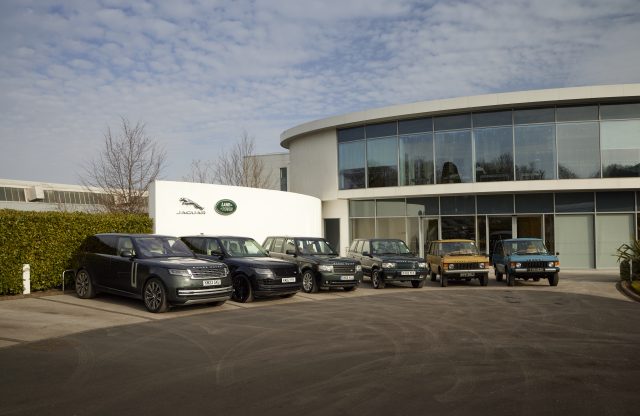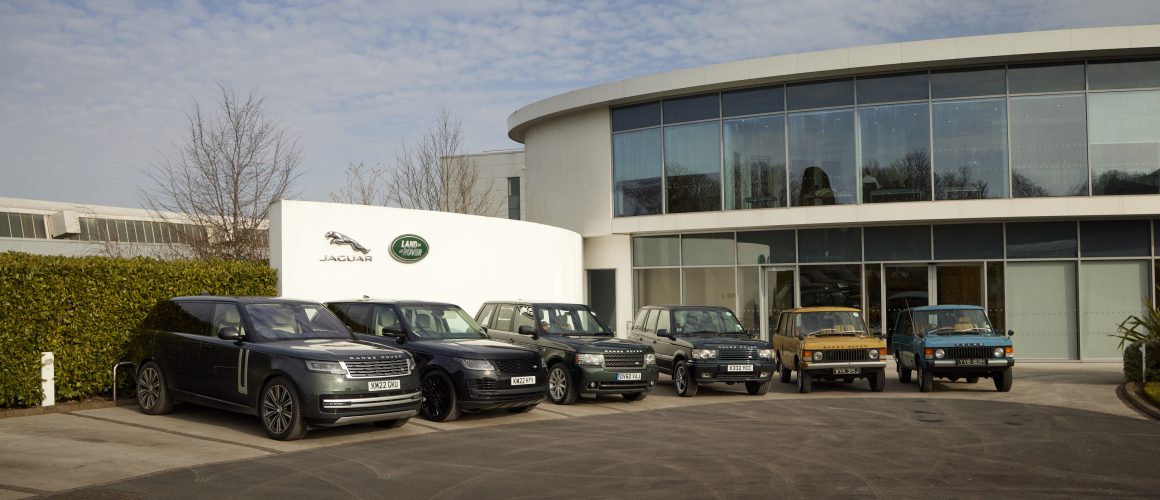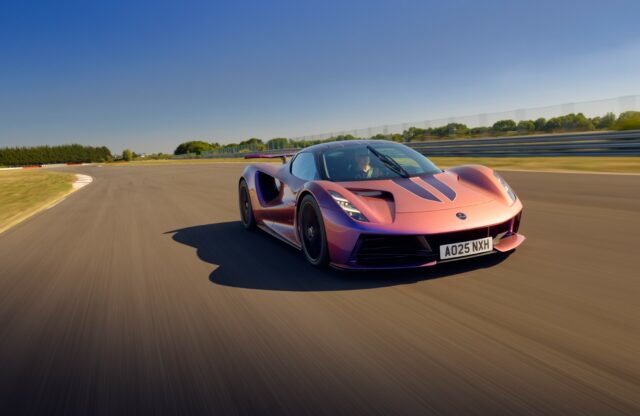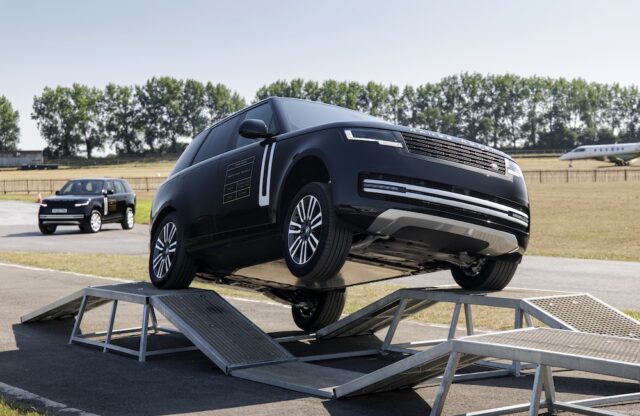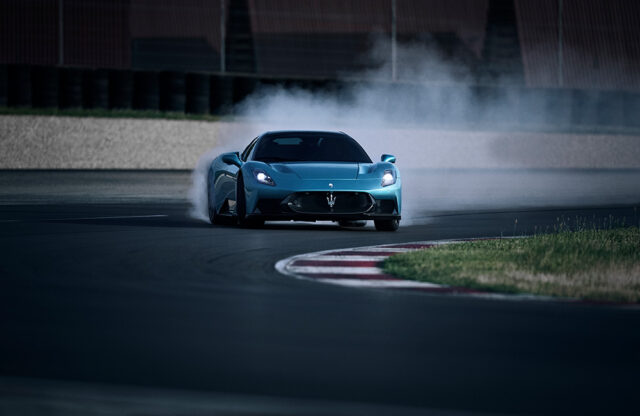WORDS: ELLIOTT HUGHES | PHOTOGRAPHY: LAND ROVER CLASSIC WORKS
More than half a century of Land Rover’s history can be traced through all five generations of Range Rover that are proudly assembled in front of Jaguar Land Rover Classic Works in Ryton, near Coventry. You can see the evolution of that iconic silhouette through each model’s clamshell bonnet, pronounced beltline, split tailgate and floating roof. Aside from the Porsche 911, it’s difficult to think of a model lineage that has retained such consistent design cues. But how do they compare? We drove each generation back-to-back to find out.
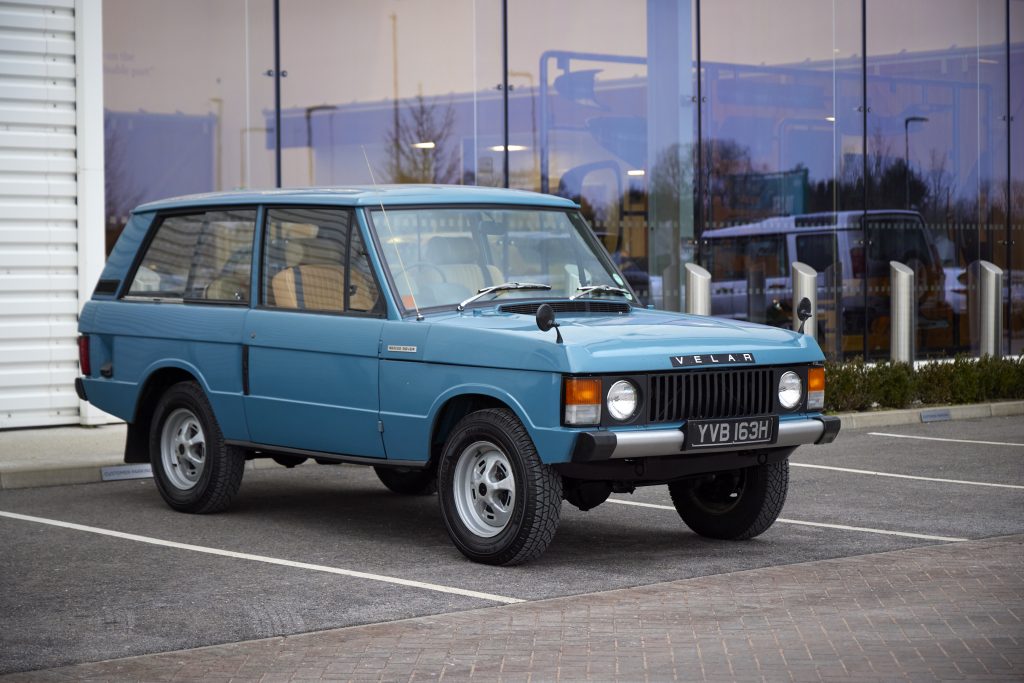
First registered in March 1970, YVB 163H is the 17th of 26 pre-production models that were used for real-world testing. These pre-production cars carried ‘Velar’ badges, which referenced the Spanish ‘velar’ (to watch over) and the Italian ‘velare’ (to hide or conceal).
Once the car had served its purpose as a test vehicle, it was purchased by former project engineer Geof Miller, who kept the car for 45 years before selling it to JLR Classic Works in 2018. It has remained in the company’s Legends heritage fleet ever since.

Range Rover was originally envisioned as more of a “premium leisure vehicle”, according to the late Miller, rather than a true-blue luxury SUV – as is immediately apparent when you unlatch the driver’s door of the Tuscan Blue prototype. There’s no thick-pile wool carpet or leather to be found. Instead, there’s a selection of hard-wearing practical materials that allow the cabin to be easily hosed down and brushed clean.
Things get more familiar once you climb into the squidgy seat and look over the bonnet in the famed ‘command’ driving position. You’re sat so high, in fact, that the bonnet takes up almost a quarter of your view out of the windscreen. Surprisingly, the slim pillars and low windows make the inside feel lighter and more airy than contemporary Range Rovers with panoramic roofs.
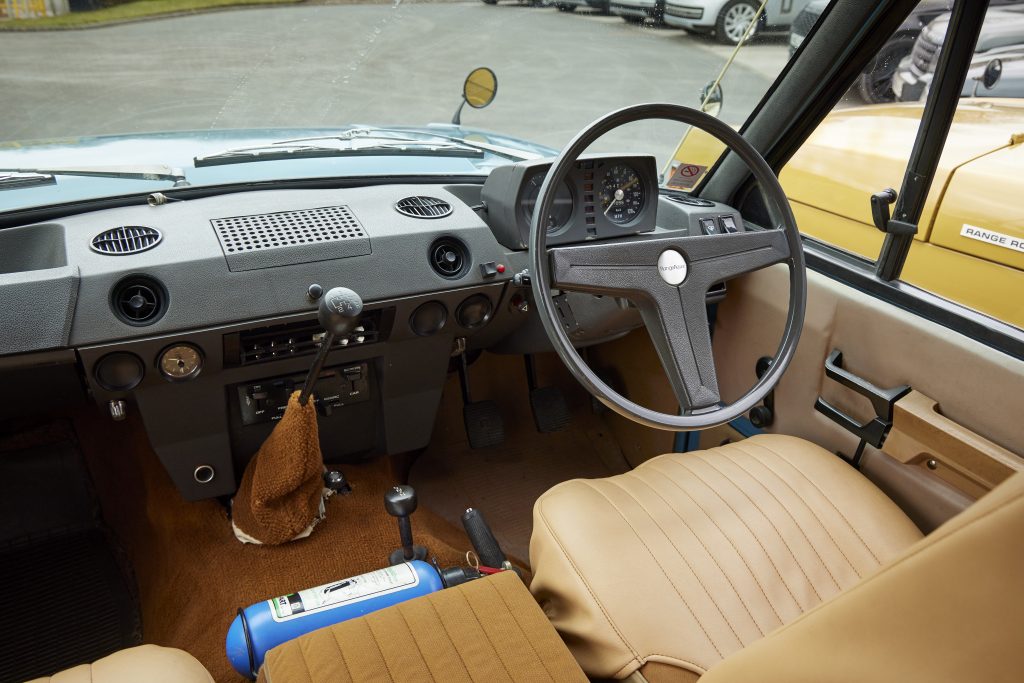
Twist the key and the cabin gently sways as the Buick-derived 3.5-litre V8 rumbles into life. The gearlever is ridiculously long by modern standards, but you still must stretch to reach it with your left hand. The steering wheel feels incongruously thin and delicate for such a large car, and the steering is heavy at low speed but lightens up nicely once you’re on the move.
The engine is smooth and offers more punchy performance than 158bhp would suggest. Disc brakes all round mean the Velar also stops better than expected. There is, however, a tremendous amount of transmission noise that builds as the car gathers speed.
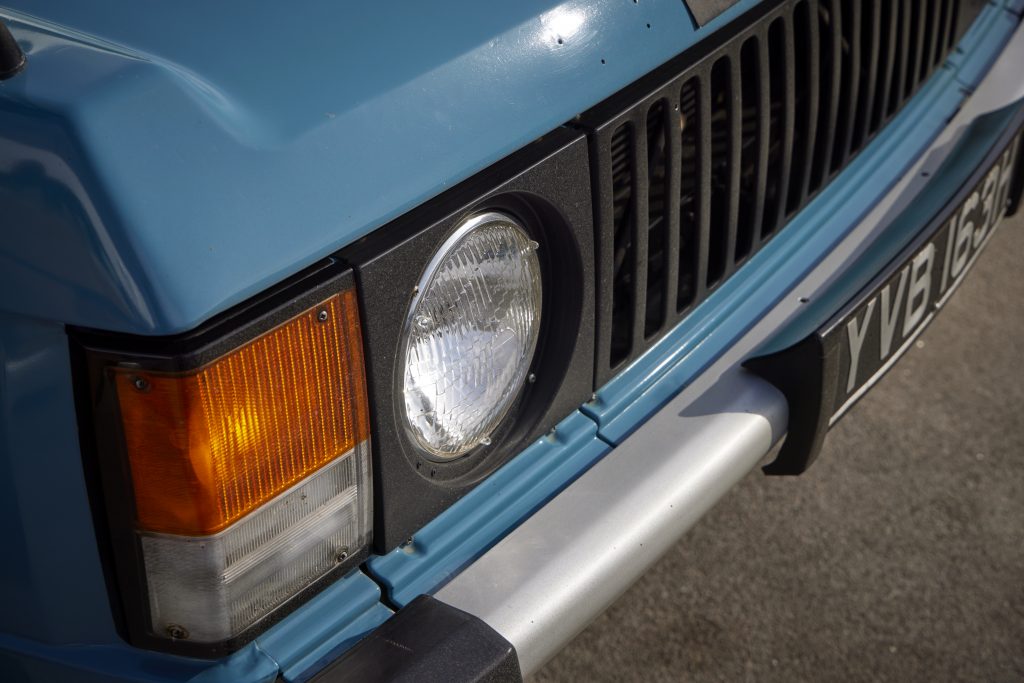
It may feel crude by today’s standards, but it’s no wonder that the original Range Rover was such a revelation compared with the bouncy cacophony of a contemporary leaf-sprung Series Land Rover. Cleverly marketed as “a car for all reasons”, the Range Rover became a classless icon during its remarkable 25 years in production.
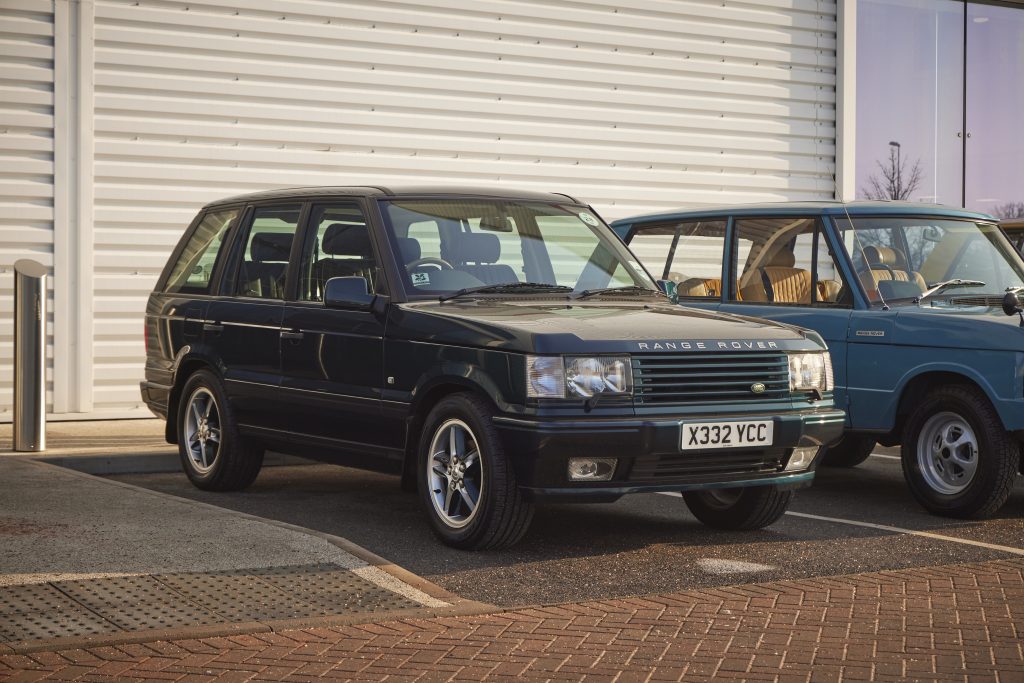
2000 Range Rover P38A Holland & Holland
The 2020 introduction of the new Defender isn’t the first time Land Rover has replaced one of its oldest models to a lukewarm response. The last time this occurred was in 1994, when the P38A finally succeeded the original Range Rover after a quarter of a century in production. Much of the public’s criticism, as with the current Defender, was directed at the P38A’s styling, which was uncharitably compared by some to a Metrocab London taxi or Talbot Horizon.
Look past the styling, however, and you’ll discover a car that features many of the attributes of a modern Range Rover. BMW’s purchase of Land Rover in 1986 meant the P38A was available with the marque’s 2.5-litre straight-six turbodiesel in addition to the standard fitment of a sophisticated air-suspension system, traction control, anti-lock brakes and even cruise control and satellite-navigation.
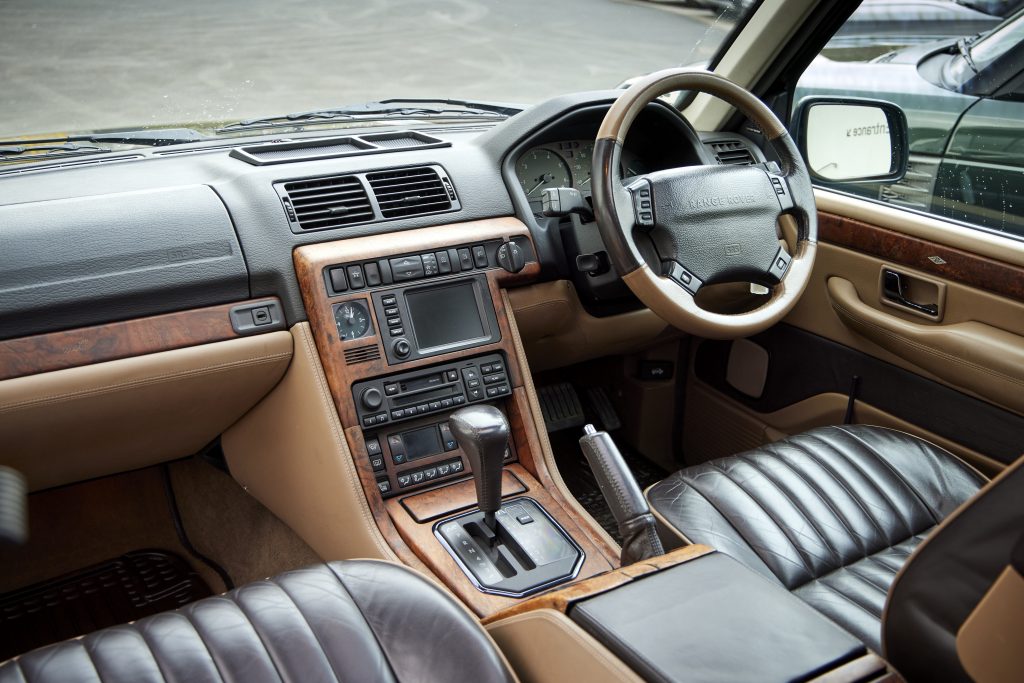
While the styling is certainly a departure from that of the original Rangie, everything feels familiar once you sink into the soft, leather-trimmed driver’s seat. The view out remains excellent, and the driving position is just as commanding as the first-gen car.
The P38A in JLR Classic’s fleet is one of only 400 special editions built in collaboration with London Gunsmith Holland & Holland. As such, it pairs the most powerful 216bhp 4.6-litre V8 with a four-speed automatic transmission. The cabin is a curious blend of luxurious green leather, bespoke oak trim and plenty of cheap 1990s switchgear. There’s even a TV, VCR and headrest screens – an £8700 option in today’s money.
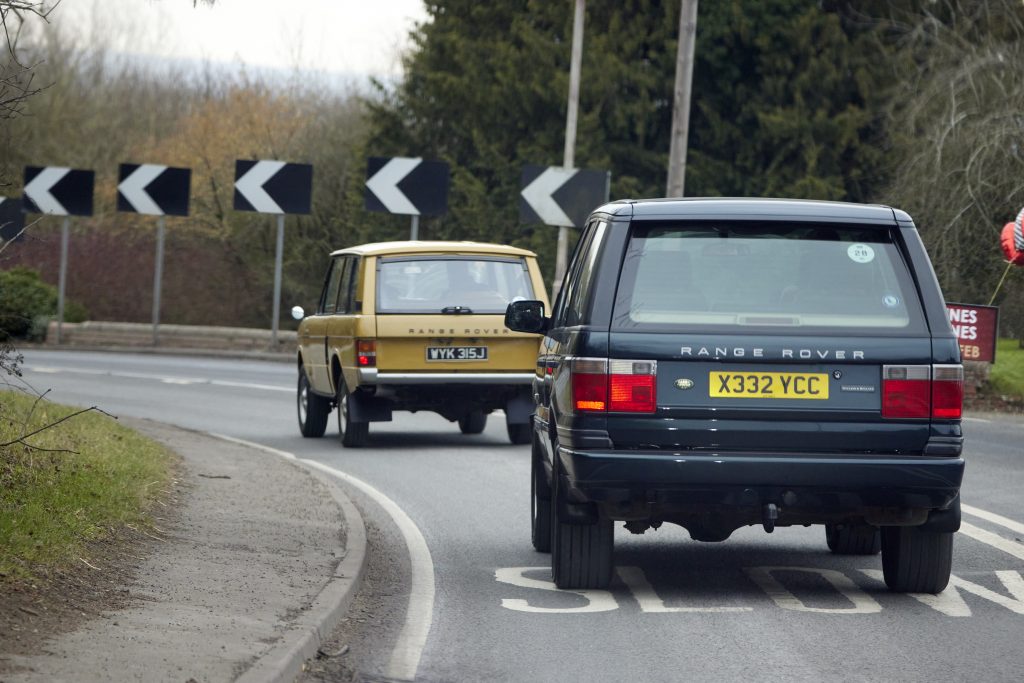
Once you’re on the move, the P38A feels worlds apart from the Velar, which seems agricultural by comparison. Progress is brisk when the four-speed automatic ‘box kicks down, and there’s a pleasant growl from the V8 as the rev counter climbs.
The air suspension provides a supple ride, featuring less comedic levels of roll than the P38A’s predecessor when briskly navigating a roundabout, as well as a useful height-raising facility for off-roading. That said, there’s still evidence of agricultural Land Rover DNA in the way you must saw at the wheel to travel in a straight line, thanks to the ladder-frame construction and high-profile tyres.
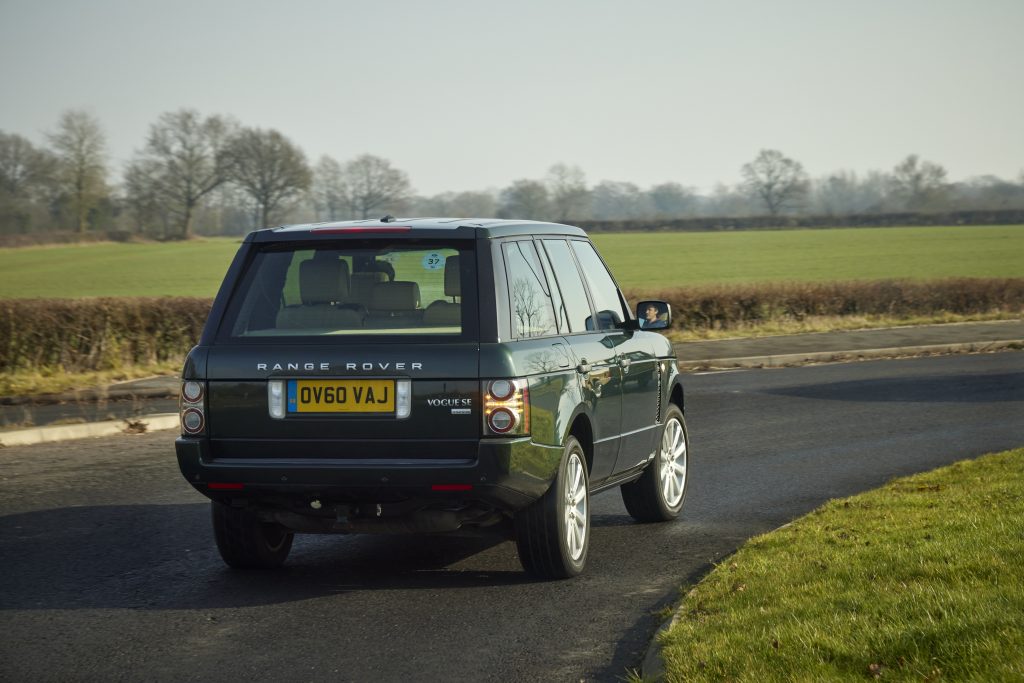
2010 Range Rover L322
Launched in 2001, the third-generation Range Rover was arguably the most dramatic step forward in the history of the nameplate. Developed under BMW, the L322 was the first truly modern Range Rover, underpinned for the first time by a monocoque chassis and fully independent suspension with interconnected air springs.
The exterior styling looks strikingly sleek and modern compared with that of the conservative P38A, and this continues once you open the door and jump inside. The impressive interior of this 2010 example is opulently finished in leather, wood and polished metal.
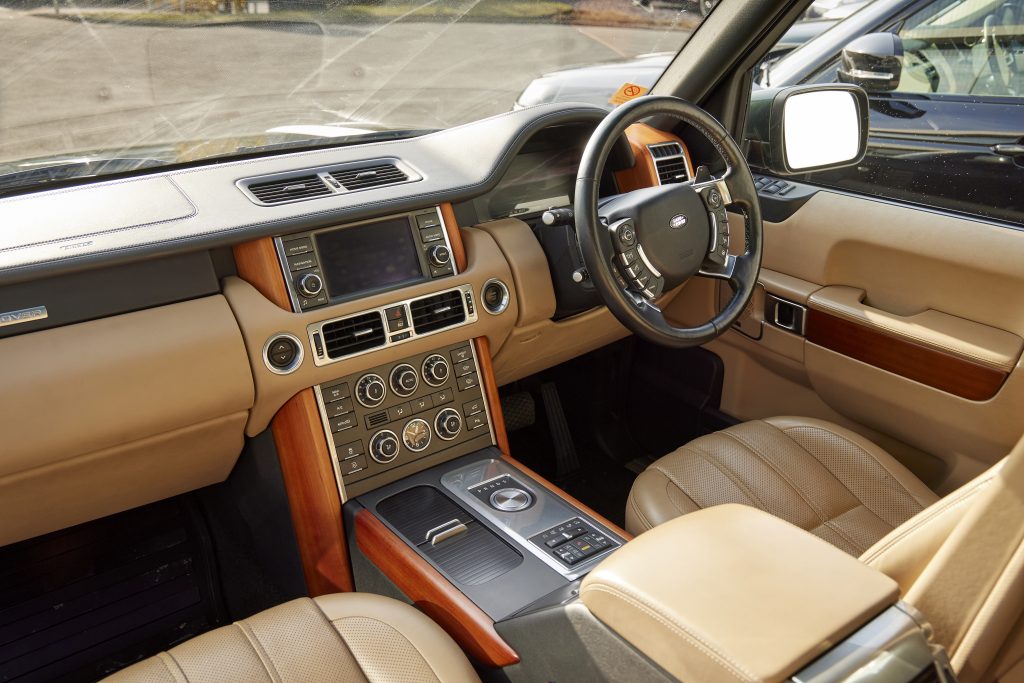
You sit slightly lower than in earlier Range Rovers, yet the driving position feels just as imperious. The powertrain is also much improved. In this particular car, it’s a 4.4-litre twin-turbo diesel V8 that sends 309bhp and 516lb ft through an eight-speed ZF automatic. The result is simply effortless progress, with none of the compromises in refinement that blemished the on-road manners of previous generations.
The success of the L322 belied the turbulence Land Rover faced during the car’s 11-year production run, as ownership of the marque transferred from BMW to Ford in 2000, and then to TATA in 2008. Evidence of this can be found in the slightly bewildering selection of engines the car was offered with, alongside a reputation for patchy reliability.
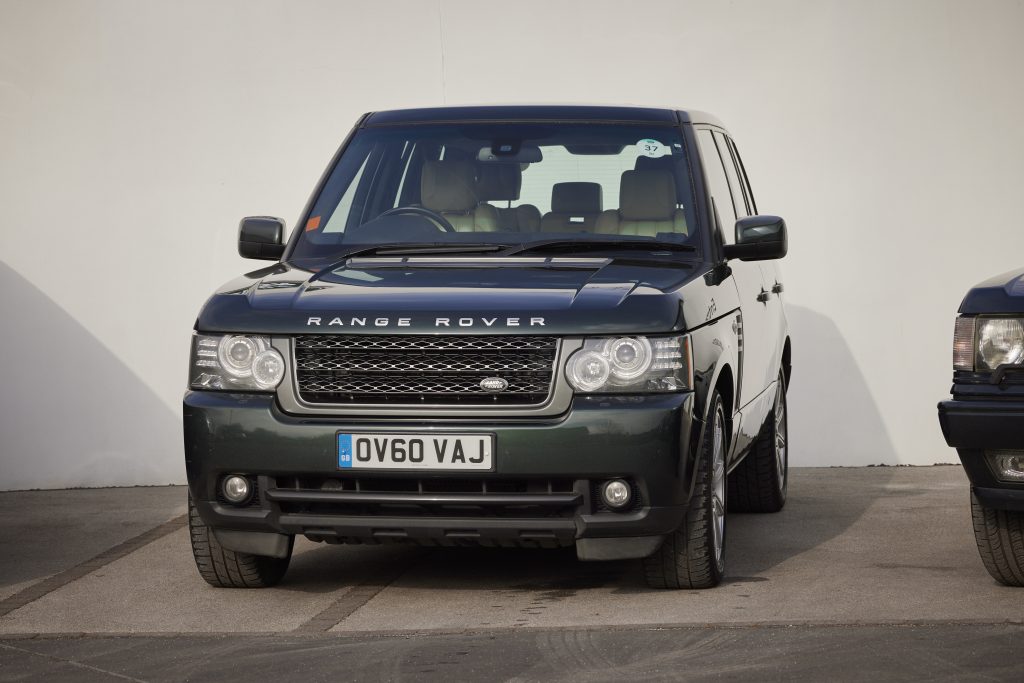
Even so, the L322 galvanised the Range Rover nameplate as the archetypal luxury SUV, even as competition from the likes of Porsche, BMW, Volvo and Audi began to heat up.
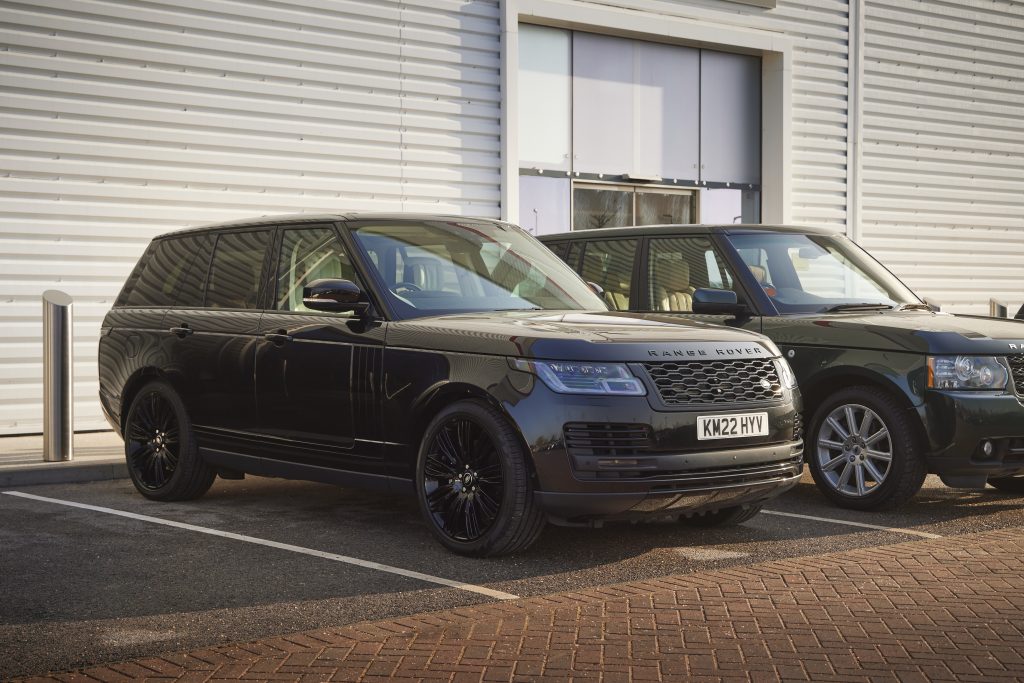
2012 Range Rover L405
The fourth-generation Range Rover was the first developed under TATA’s ownership, and it built upon the L322 recipe of improved on-road dynamics and luxury while retaining the nameplate’s off-roading potential. To achieve this, the L405 was the first Range Rover to be underpinned by an all-aluminium monocoque, making it 420kg lighter than the previous-generation model despite being longer and wider. It was also the first Range Rover ever offered with hybridised powertrains. Familiar Range Rover design traits including the split beltline, floating roof and clamshell bonnet were refined into a sleeker and more aerodynamic shape than previously seen.
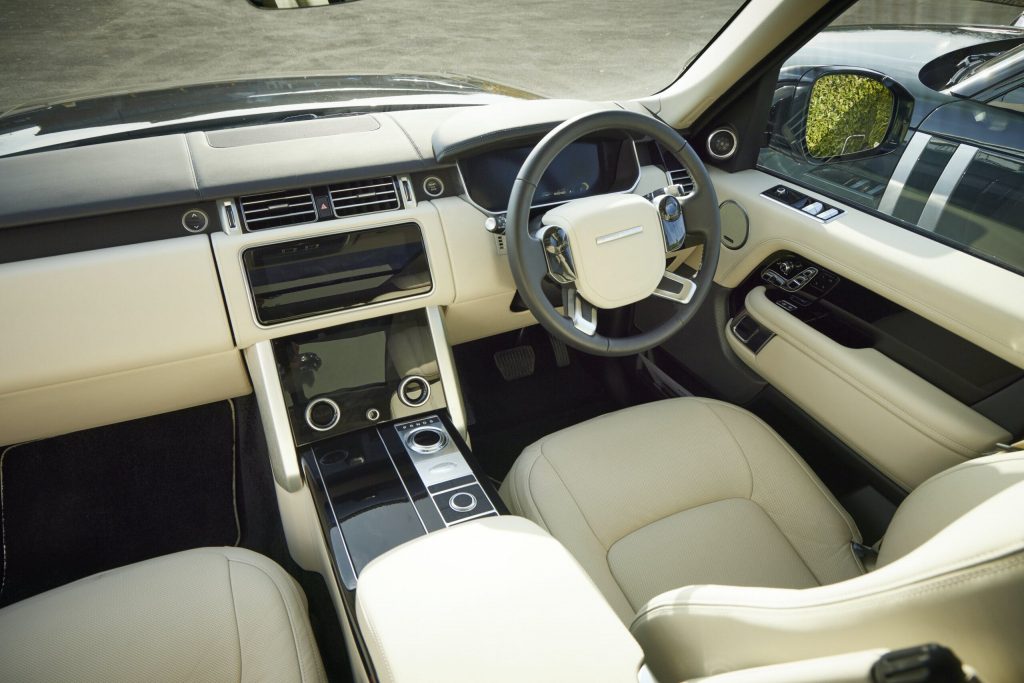
Built in January 2022, this car was the final L405 to leave the production line, and it was suitably equipped with the most potent powertrain offered: a 519bhp 5.0-litre supercharged V8. The alarming way it can cover ground bears no resemblance to the comparatively languid demeanour of the early V8 Range Rovers, and its lighter kerbweight means it feels just as agile as the L322 despite being considerably bigger. Off-road, its abilities go way beyond expectations for such a large vehicle.
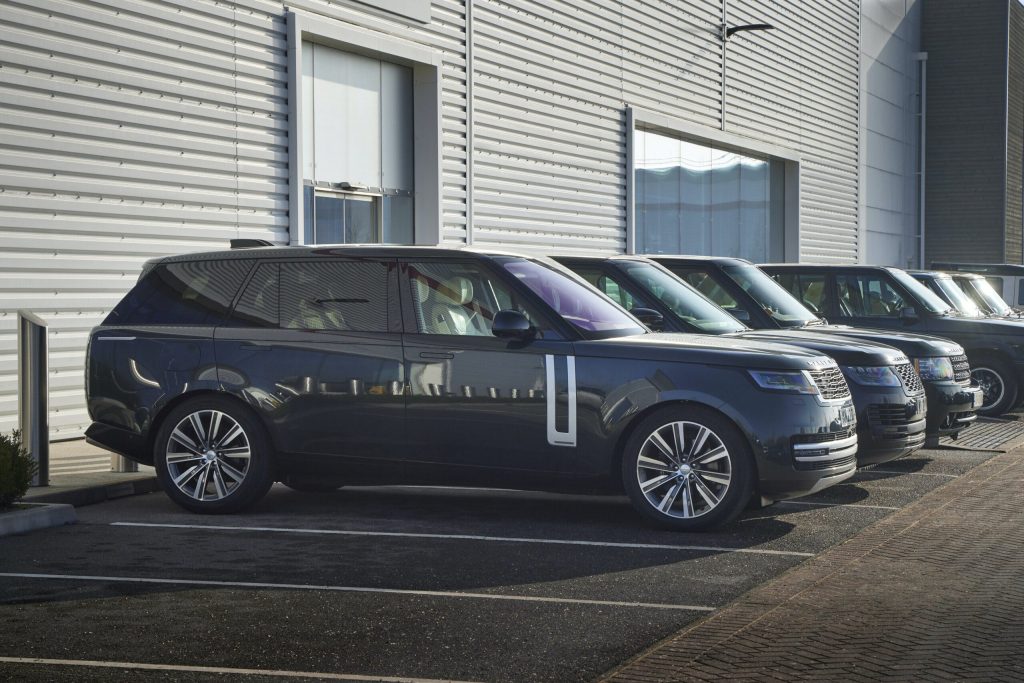
2022 Range Rover L422
The newest generation of Land Rover’s flagship nameplate debuted only last year. This latest model’s minimalist styling is characterised by clean surfaces and smooth, pebble-like curves, which are complemented by a luxurious interior that features few buttons and a large, sharp display screen.
Lurking under the bonnet is a diesel 3.0-litre straight-six that puts out 345bhp and 516lb ft. Its briskness combines with crisp, modern steering and powerful brakes for an effortless driving experience. The latest-generation car is the first to incorporate rear-wheel steering, which betrays the model’s considerable size further still. On the road, turn-in is sharper and more precise, and off-road the rear-steer makes for much-improved manoeuvrability.
As expected, it’s a polished evolution of the established Range Rover recipe, which will be made even more interesting once Land Rover introduces its first all-electric Range Rover in 2024.

